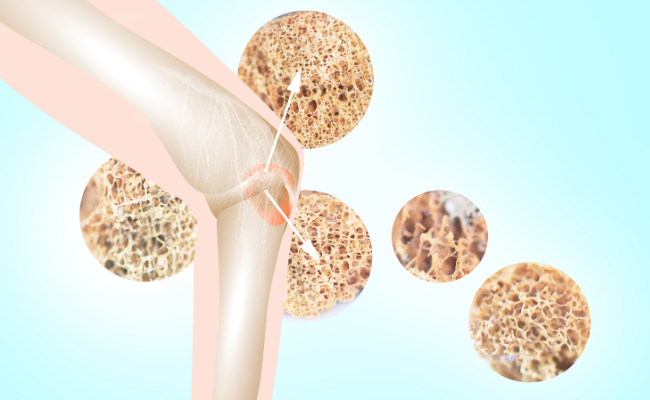How to Treat Osteoporosis?
- November 10, 2023
- No Comments

What is Osteoporosis?
Osteoporosis is a progressive weakening of bones, leading to increased fragility and susceptibility to fractures. The term "osteoporosis" refers to "porous bones," indicating diminished bone density and quality. Bones, dynamic structures undergoing continuous remodeling, experience disruption in osteoporosis, resulting in porous and brittle bones. This compromises bone strength, making fractures more likely. In a healthy state, bones have sufficient density and strength, but with aging, natural decline occurs. Osteoporosis exacerbates this, making bones significantly more fragile. This heightened vulnerability underscores the profound impact of osteoporosis on bone health.
Why Does Osteoporosis Occur?
The development of osteoporosis is influenced by various factors, and it often progresses silently without noticeable symptoms until a fracture occurs. Aging is a significant contributor to osteoporosis, as bone density naturally decreases over time. In women, hormonal changes during menopause, specifically a decline in estrogen levels, can accelerate bone loss. Additionally, inadequate dietary intake of calcium and vitamin D, sedentary lifestyle, smoking, excessive alcohol consumption, and certain medical conditions or medications can contribute to the development of osteoporosis.
How Does Osteoporosis Manifest?
Osteoporosis is often referred to as a "silent disease" because it typically does not present visible symptoms until a fracture occurs. Fractures related to osteoporosis most commonly affect the hip, spine, and wrist. These fractures can occur with minimal trauma or stress, such as a minor fall or even routine activities. Reduced bone density compromises the structural integrity of the skeleton, making bones more prone to fractures.
Treatment Solutions for Osteoporosis:
- Medications: Medications play a crucial role in the management of osteoporosis. Bisphosphonates, such as alendronate and risedronate, are commonly prescribed to increase bone density and reduce the risk of fractures. Denosumab, teriparatide, and romosozumab are additional medications that may be recommended based on individual health considerations.
- Calcium and Vitamin D Supplements: Adequate intake of calcium and vitamin D is essential for maintaining bone health. Supplements may be prescribed to ensure that the body has the necessary nutrients for bone formation and density.
- Lifestyle Modifications: Incorporating regular weight-bearing exercises into the routine, such as walking, jogging, and weight training, helps stimulate bone formation and improve bone density. Quitting smoking and moderating alcohol intake also contribute to better bone health.
- Healthy Diet: A balanced diet rich in calcium and vitamin D is integral to preventing and managing osteoporosis. Foods such as dairy products, green leafy vegetables, and fortified foods are excellent sources of these essential nutrients.
- Fall Prevention Strategies: Osteoporosis increases the risk of fractures resulting from falls. Implementing fall prevention strategies, such as keeping living spaces well-lit, using handrails, and wearing appropriate footwear, can significantly reduce the likelihood of fractures.
- Hormone Replacement Therapy: For postmenopausal women, hormone replacement therapy (HRT) may be considered to address hormonal changes contributing to bone loss. However, the decision to undergo HRT should be made in consultation with a healthcare provider, considering individual health risks and benefits.
Benefit Points of Osteoporosis Treatment:
- Fracture Risk Reduction: The primary goal of osteoporosis treatment is to significantly reduce the risk of fractures, particularly in high-risk areas such as the hip, spine, and wrist.
- Improved Bone Density: Medications and lifestyle modifications aim to improve bone density, enhancing the overall strength and resilience of bones.
- Enhanced Quality of Life: Successful treatment contributes to an improved quality of life by preventing fractures and maintaining bone health.
- Increased Mobility: Strengthening bones through exercise and proper nutrition promotes increased mobility, reducing the impact of osteoporosis on daily activities.
- Fall Prevention: Fall prevention strategies play a crucial role in avoiding fractures, allowing individuals to maintain independence and confidence in their movements.
- Customized Treatment Approaches: Healthcare providers tailor treatment plans based on individual health status, ensuring personalized and effective interventions.
- Long-Term Health Benefits: Lifestyle modifications and dietary changes recommended for osteoporosis management offer long-term health benefits beyond bone health, contributing to overall well-being.
Comments (0)